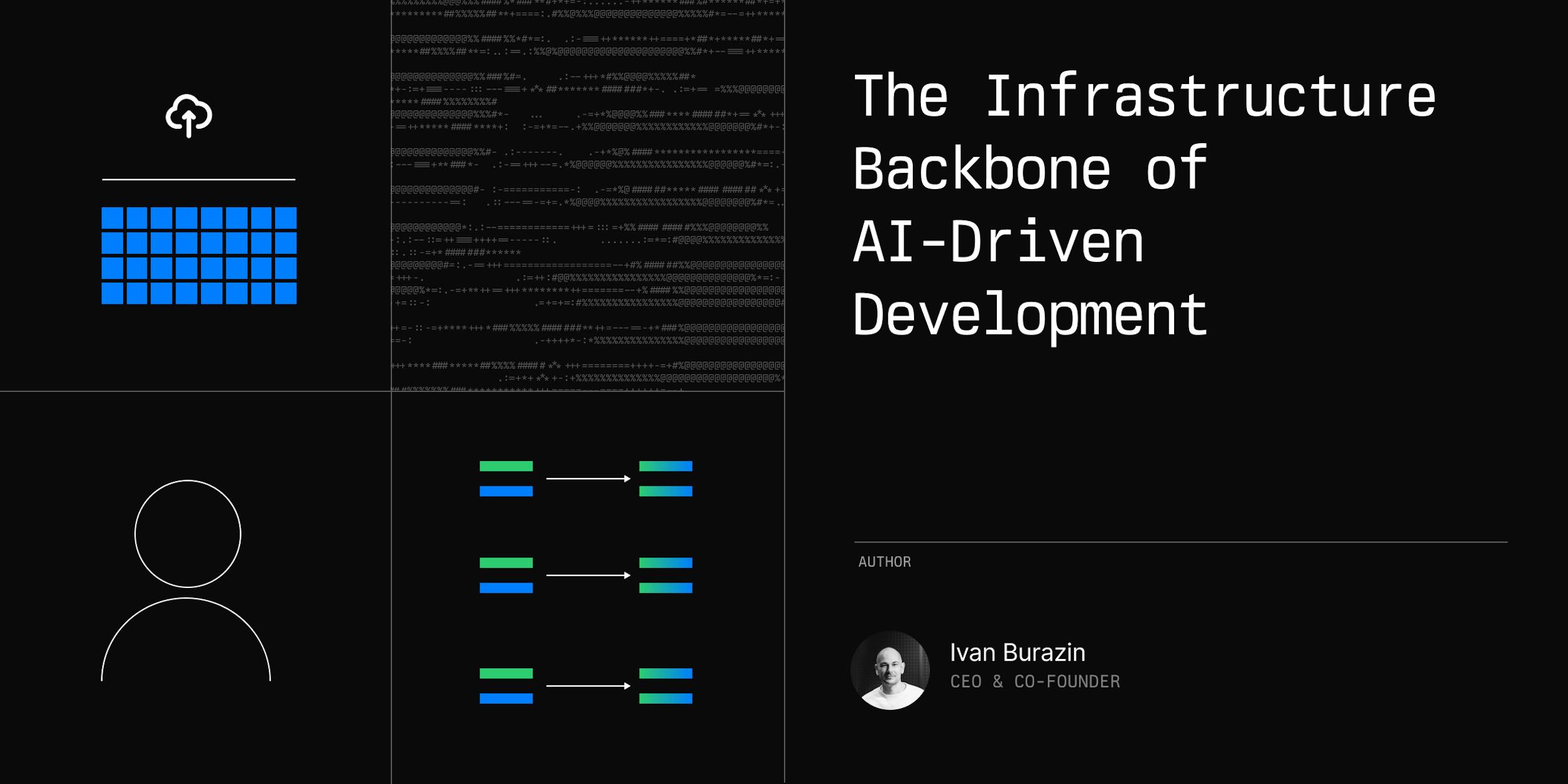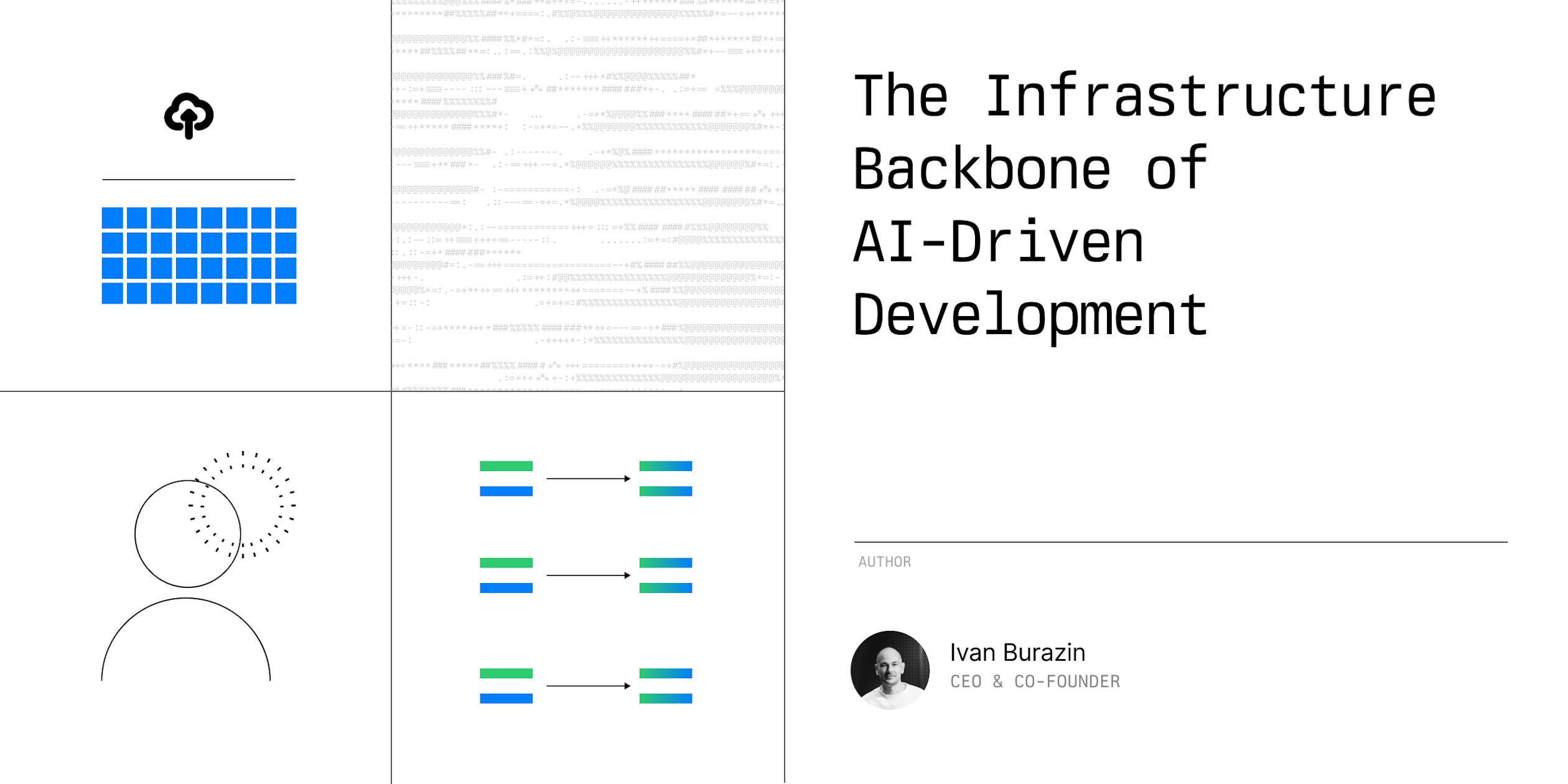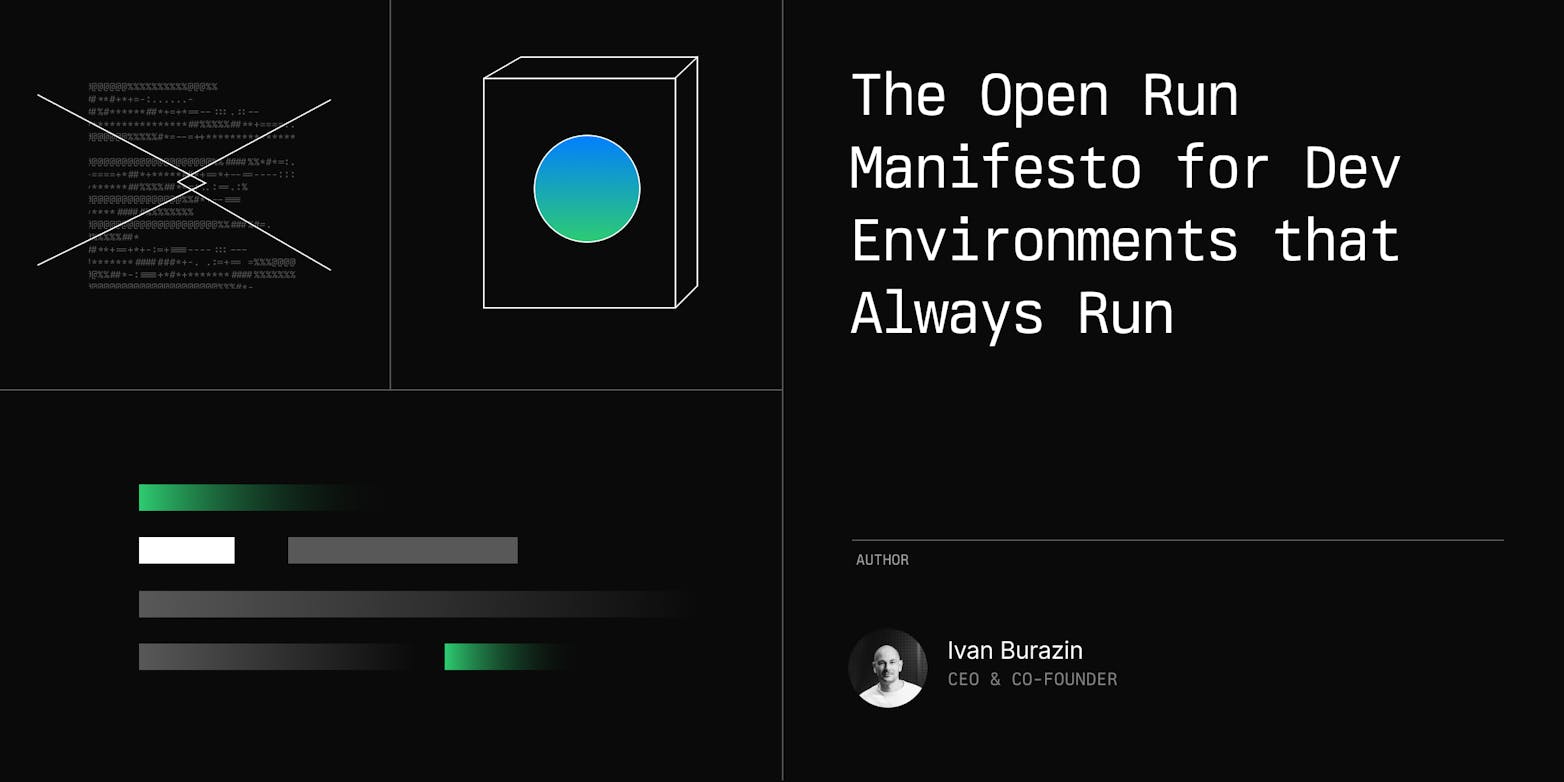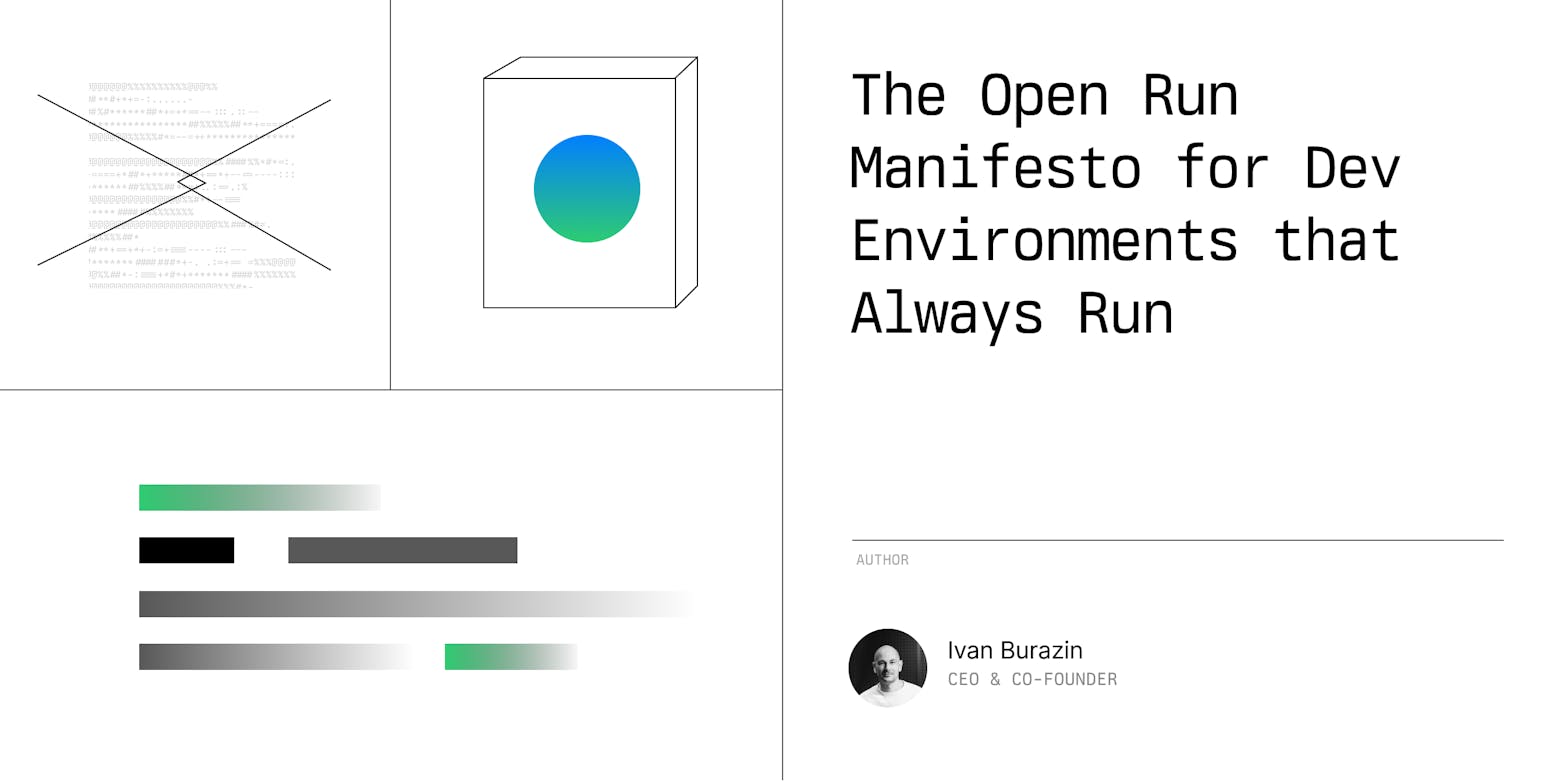My recent article, "The Real AI Coding Race: Why Success Lies in the Interface, Not the Model," sparked much discussion about the future of AI-driven software development.
While I focused on the importance of user interfaces and middleware in that piece, I now want to draw attention to another critical component: the infrastructure backbone. Although this foundational layer has always been crucial, it deserves special attention in the current AI setting.
In essence, infrastructure in this context is the foundational layer that supports the operation, execution, and interaction of AI coding agents, bridging the gap between raw AI capabilities and practical application in software development workflows.
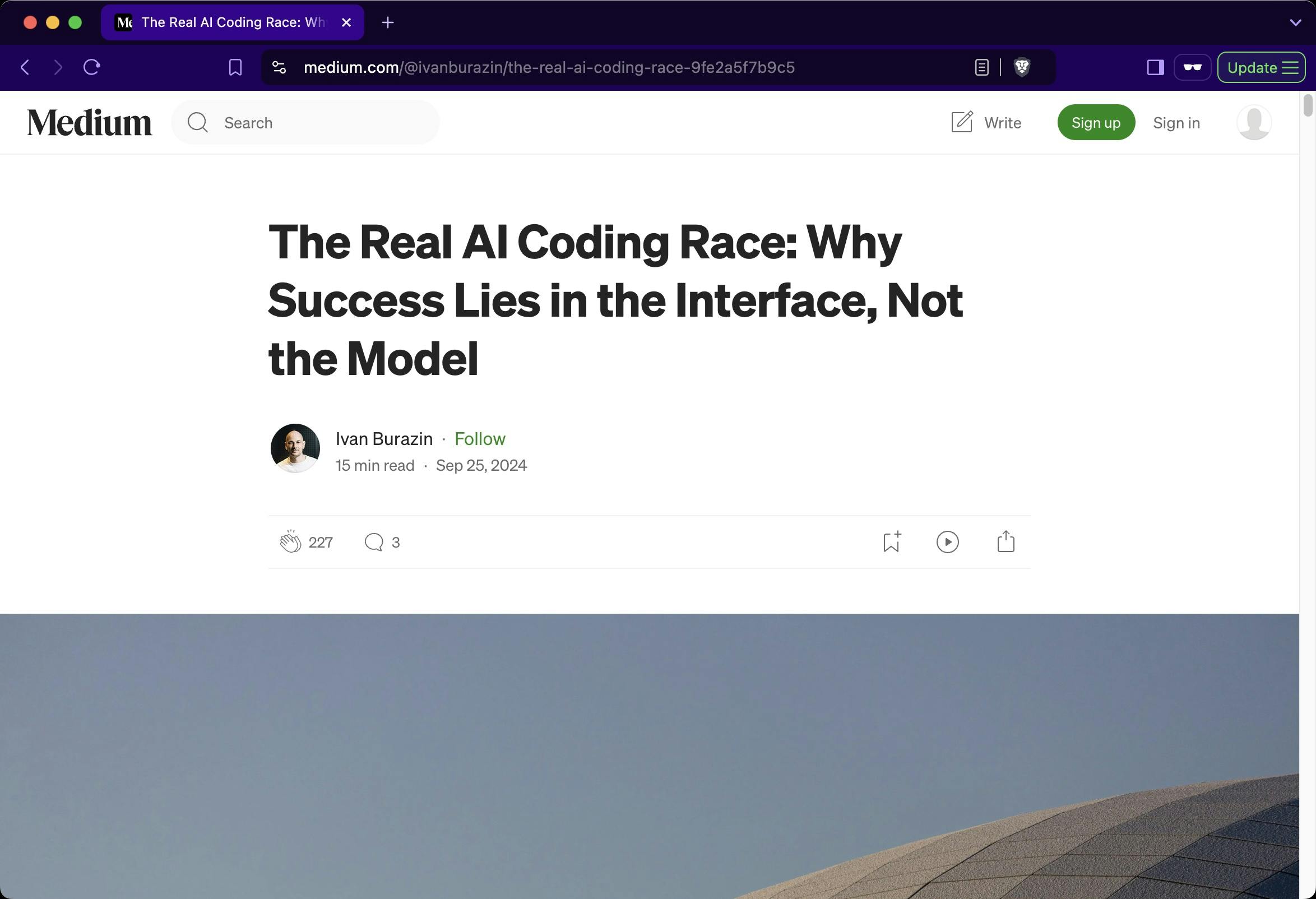
The race for AI-driven software development is in full swing, with companies pouring billions into creating the next generation of coding tools. While much attention has been focused on AI models, in addition to interfaces the true differentiator in this space may be the often overlooked infrastructure layer.
As AI coding agents become more sophisticated, the demands on the underlying infrastructure grow exponentially. This article explores why robust, scalable, and flexible infrastructure is crucial for the success of AI coding agents and how it's shaping the future of software development.
TL;DR
Infrastructure is crucial for AI coding agents' success
Cloud-based solutions overcome local computing limitations
Middleware orchestrates multiple AI models efficiently
Future infrastructure will focus on integration, security, and collaboration
The Limitations of Local Computing
One of the most significant challenges in building effective AI coding agents is the reliance on local machines. This approach introduces a myriad of issues that hinder the performance and reliability of these agents:
Operability: AI agents struggle to identify the operating system they're running on, leading to inconsistent performance across different environments.
Compute Constraints: Local machines often lack the necessary computing power for AI agents to perform complex tasks effectively.
Security Concerns: Running AI agents locally can introduce potential vulnerabilities, as these agents require access to user files and data.
In addition to the above, these limitations echo the frustrations expressed in the Open Run Manifesto, where developers waste significant time on environment setup and maintenance, stifling innovation and creating barriers to entry.
The Cloud-Based Solution
To address these limitations, companies are turning to cloud-based infrastructure solutions. Platforms like Devin.ai by Cognition offer cloud-based sandbox environments that eliminate local machine constraints. These environments provide several advantages:
Scalability: Cloud-based solutions allow for better scalability, enabling developers to spin up multiple AI agents to perform tasks in parallel.
Consistent Performance: By standardizing the environment, cloud-based solutions ensure consistent performance across all users, regardless of their local setup.
Enhanced Security: Cloud-based sandboxes provide a more secure way to manage AI agent operations, reducing risks to the local environment.
Flexibility: Some solutions offer a hybrid approach, allowing developers to choose between local and cloud resources based on specific task requirements.
The Role of Middleware and Infrastructure
The infrastructure layer forms a critical part of the middleware for AI coding agents. Effective middleware solutions incorporate standardized and sandboxed infrastructure to orchestrate multiple models and tasks. Companies like GitHub and Codium.ai are leveraging sophisticated middleware to coordinate the use of multiple specialized models, each optimized for specific tasks.
This approach not only reduces inference costs but also ensures that the most suitable model is deployed for each job, enhancing overall performance and accuracy. As noted by Continue's Co-Founder Ty Dunn, "Enabling the right models for the job is critical."
The Future of AI-Driven Development Infrastructure
As the field of AI-driven development moves with blazing speed, we can expect to see significant advancements in infrastructure layer. Increased integration between cloud infrastructure, middleware, and user interfaces will create more seamless development experiences. Adaptive resource allocation will become more sophisticated and dynamically adjusted based on task complexity and urgency.
Collaboration tools will also improve, with infrastructure solutions facilitating better interaction between human developers and AI agents. These tools will maintain context and history across interactions, creating a more cohesive and productive development environment.
Human-AI Collaboration: The Next Frontier
One of the unsolved challenges highlighted in my previous article and the Open Run Manifesto is seamless human-AI collaboration. Future infrastructure solutions will need to address this by:
Maintaining shared context between human and AI efforts.
Reducing cognitive load from context switching.
Enabling fluid transitions between human and AI tasks.
The infrastructure layer will play a crucial role in facilitating this collaboration, serving as the foundation upon which these seamless interactions between humans and AI can be built and optimized.
Conclusion
While much of the focus in AI-driven software development has been on models and agents, the infrastructure layer is emerging as a critical differentiator. Companies that can build or leverage robust, scalable, and flexible infrastructure solutions will be well-positioned to lead in this space.
As we move towards more sophisticated AI coding agents, the importance of a strong infrastructure backbone will only grow.
Question for Reflection: How can we contribute to building infrastructure that enables "open run" environments—where any piece of software is instantly executable, regardless of the user's local setup or technical expertise? What key infrastructure components or innovations are necessary to make this vision a reality?

